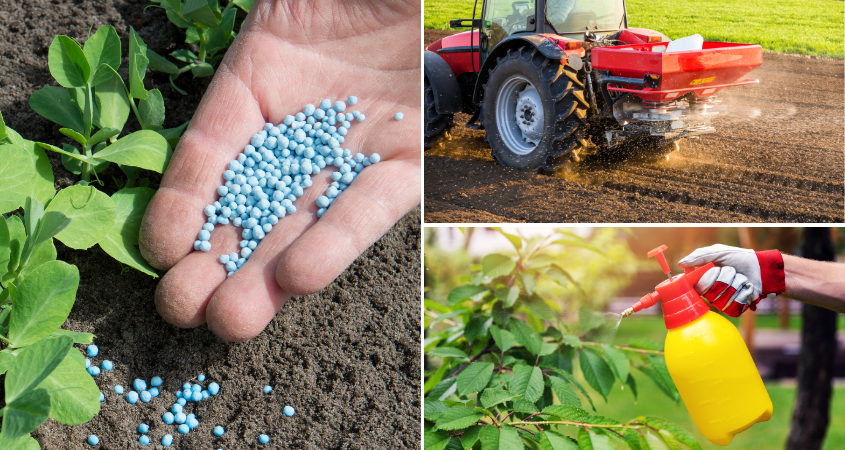
Effective fertilizer application is a critical aspect of soil and crop management. Understanding different techniques for applying fertilizers can significantly impact nutrient distribution, crop growth, and environmental sustainability. Here are key points to consider when discussing fertilizer application techniques:
Broadcasting involves uniformly spreading dry or granular fertilizers across the entire field’s surface. This technique is simple and suitable for large-scale farming. It’s important to use the right equipment to achieve even distribution. Calibration of spreaders is essential to prevent over- or under-application.
Banding fertilizer involves placing it in narrow bands or rows, typically near or beneath the seed row. This technique concentrates nutrients where plants need them most. Banding reduces the risk of fertilizer contact with foliage, minimizing nutrient loss and potential harm to the crop.
Side-dressing is the application of fertilizer in a band beside the crop rows during the growing season. This provides nutrients directly to the crop when demand is highest. It’s particularly useful for crops with high nutrient requirements during specific growth stages.
Foliar feeding involves applying liquid fertilizers directly to the leaves of plants. This technique is used for micronutrient supplementation or to address nutrient deficiencies. It provides a quick nutrient boost to plants but is not a substitute for soil-applied fertilizers.
Soil injection is a method of applying liquid fertilizers or amendments by injecting them directly into the soil. This allows for precise placement of nutrients. It’s often used in precision agriculture to target specific areas or depths within the soil.
Drip irrigation systems can deliver liquid fertilizers through the irrigation water. This technique provides nutrients directly to the root zone, reducing nutrient loss. Drip systems are efficient and ideal for delivering soluble fertilizers to horticultural and high-value crops.
Controlled-release or slow-release fertilizers provide nutrients to plants over an extended period. They reduce the frequency of application and minimize nutrient leaching. These fertilizers are suitable for crops with long growing seasons.
Variable rate technology (VRT) customizes fertilizer applications based on soil nutrient maps or crop needs. It optimizes nutrient use efficiency. VRT is a precision agriculture approach that minimizes the overuse and waste of fertilizers.
Split application involves dividing the total fertilizer requirement into multiple applications during the growing season. This matches nutrient availability with crop demand. It’s beneficial for crops with changing nutrient needs at different growth stages.
In summary, understanding and implementing appropriate fertilizer application techniques can lead to more efficient nutrient use, improved crop yields, and reduced environmental impact. Farmers should consider their specific crops, soil conditions and soil testing recommendations when choosing the most suitable application method for their agricultural practices.
savesoil #soilhealth #soilscience
Order our services and get to know how to improve your soil for better yeilds.